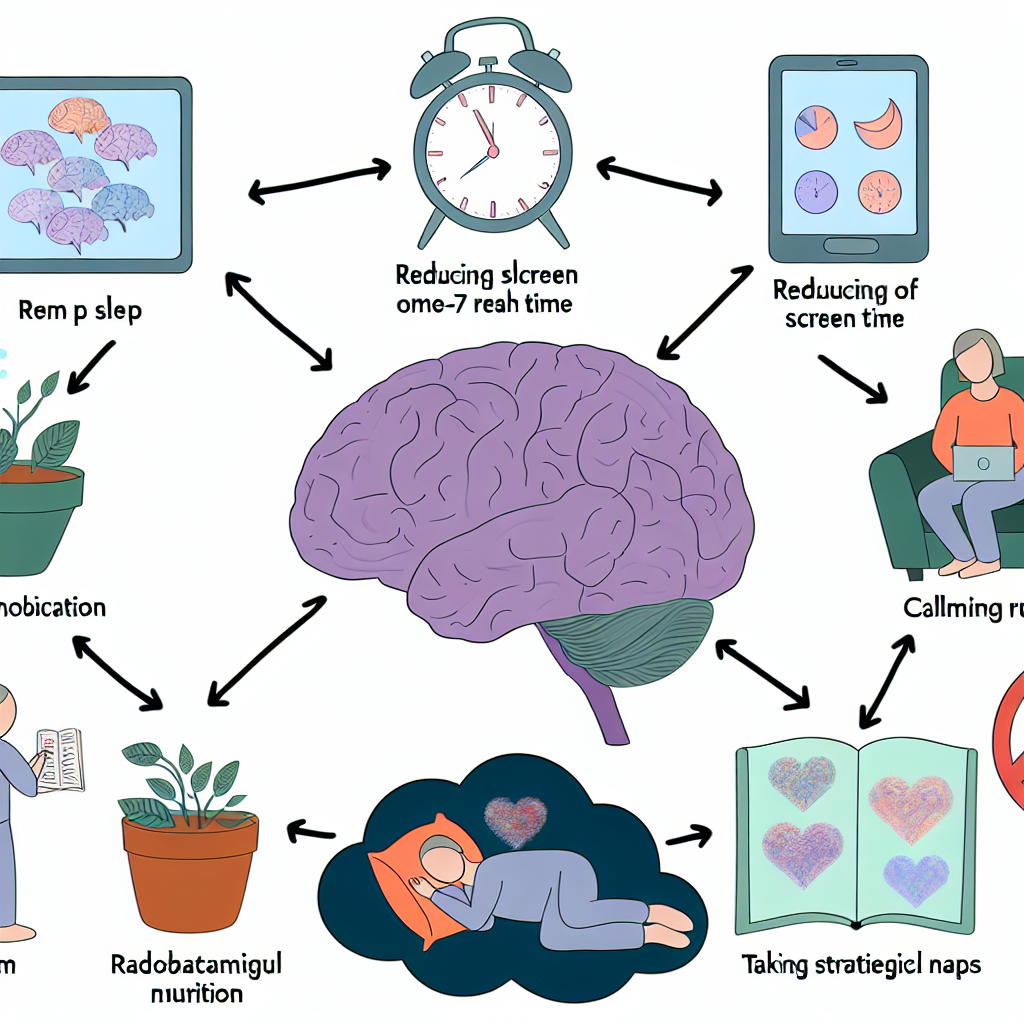Melatonin Microdosing Techniques: How to Reset Your Circadian Rhythm Naturally
Discover the safe and science-based approach to reclaiming restful sleep—without high doses or harsh medications.
Why Your Sleep Is Out of Sync – And What You Can Do About It
In our fast-paced modern world, sleep issues are becoming more common across all age demographics. With increased screen time, shift work schedules, travel across time zones, and stress, our internal clocks – also known as circadian rhythms – often fall out of sync with the natural day-night cycle.
A disrupted circadian rhythm can lead to numerous health issues including insomnia, fatigue, mood disorders, and even weakened immunity. As a result, many individuals are searching for safe ways to restore their natural sleep patterns without dependency on pharmaceutical sleep aids.
Melatonin, often referred to as the “sleep hormone,” is naturally produced by the pineal gland in the brain in response to darkness. It signals to the body that it’s time to wind down for rest.
Supplementing with melatonin has become a common go-to remedy for individuals experiencing trouble falling asleep. However, recent trends and research are shifting away from the traditional high-dose melatonin approach to more refined and bio-aligned methods such as melatonin microdosing.
What Is Melatonin Microdosing – And Why Is It Gaining Popularity?
Melatonin microdosing involves administering very small amounts of melatonin — significantly less than standard over-the-counter doses — to support the body’s natural circadian rhythm without overwhelming it.
While conventional supplementation often includes 3 mg to 10 mg per dose, microdosing typically ranges from 0.1 mg to 0.5 mg. This subtle strategy aims to aid the body’s internal systems in recognizing evening signals and realigning its natural timing, particularly for those experiencing delayed sleep phase disorder, jet lag, or environmentally-induced circadian rhythm disruption.
Unlike larger doses that work more like a sedative, microdosing works on a physiological level, mirroring the body’s natural production. It proactively supports your internal clock instead of overriding it.
This method is showing promise not only for individuals with insomnia but also for teenagers undergoing hormonal changes, older adults whose melatonin production has declined, and shift workers whose sleep patterns are frequently disrupted.
Backed by Science: Medical Research on Melatonin Microdosing
Emerging research on melatonin microdosing underscores its growing importance in sleep medicine.
One of the key insights comes from understanding that the body’s peak melatonin production is around 0.3 mg — far less than most commercial supplement doses. Excessive supplementation can actually desensitize melatonin receptors and interfere with the body’s natural rhythm.
A pivotal study published in the *Journal of Clinical Endocrinology & Metabolism* found that just 0.3 mg of melatonin helped improve sleep onset and maintained circadian rhythm integrity in older adults — with fewer side effects and better morning alertness (Wade AG et al., 2010).
Harvard Medical School also encourages low-dose usage, recommending 0.3–0.5 mg for sleep phase realignment, particularly noting the disadvantages of excessive doses that can cause grogginess.
In elderly populations, MIT researchers discovered that higher doses did not provide better results and could even prolong melatonin in the bloodstream past the desired window — reducing sleep quality instead of enhancing it (MIT News, 2001).
Melatonin acts as a “chronobiotic,” a substance that shifts your internal clock. Microdosing optimizes this chronobiotic effect — allowing for a smoother transition back to aligned sleep-wake cycles.
Who Can Benefit from Melatonin Microdosing?
The beauty of melatonin microdosing is its wide range of potential applications:
– Shift workers who struggle to fall asleep or wake up appropriately
– Older adults with declining natural melatonin production
– Frequent travelers experiencing jet lag
– Students with delayed sleep phase from late-night studying
– Teenagers going through hormonal changes disrupting sleep
Especially for jet lag, taking 0.5 mg of melatonin shortly before the target bedtime in the destination time zone can simulate dusk and trigger melatonin release, helping adjust the internal clock more swiftly.
In trials with airline crew and shift workers, small doses led to faster adaptation, improved mood, and reduced sleep inertia. When paired with light exposure therapy, even better results were achieved.
How to Start Melatonin Microdosing Safely and Effectively
Interested in trying melatonin microdosing? Follow these quick best practice pointers:
✔️ Start Small: Begin with as little as 0.3 mg, 30–60 minutes before your desired bedtime.
✔️ Stay Consistent: For chronic issues, maintain the routine daily for at least 1–2 weeks.
✔️ Time It Right: Microdosing works best when taken based on circadian science — aligned with dim lighting and your target sleep schedule.
✔️ Combine with Sleep Hygiene: A cool, dark bedroom, screen-free evenings, and a consistent bedtime will maximize benefits.
✔️ Consult Your Doctor: Always talk to a healthcare provider before beginning microdosing — especially if you’re pregnant, on medication, or managing chronic illness.
Final Thoughts: Embrace the Power of Subtle Signals
Melatonin microdosing represents a natural, low-risk, and scientifically-backed method for restoring the body’s circadian timing and improving sleep quality. By working in harmony with the body’s innate biology, this technique offers a meaningful alternative for individuals struggling with chronic sleep issues or subtle disruptions in their sleep-wake cycles.
Whether you’re battling jet lag, juggling night shifts, or simply trying to fall asleep easier, microdosing offers a science-smart solution rooted in bio-alignment. Instead of jolting your hormones into action, you’re gently guiding them back on track.
Pair it with intentional changes in lifestyle, light exposure, and quality sleep practices — and you’ll be well on your way to resetting your internal clock and awakening refreshed.
Summary:
Melatonin microdosing is a natural and science-backed approach to restoring the body’s circadian rhythm and improving sleep quality. By taking very small amounts of melatonin (0.1-0.5 mg) instead of high doses, individuals can gently guide their internal clock back into alignment without overwhelming the body’s natural systems. This method shows promise for addressing sleep issues in a variety of populations, including shift workers, frequent travelers, students, and older adults. By combining melatonin microdosing with healthy sleep hygiene practices, individuals can reset their circadian rhythms and wake up feeling refreshed.
References:
1. Harvard Health Publishing. “Melatonin: What You Need to Know.” Harvard Medical School. https://www.health.harvard.edu/staying-healthy/melatonin-and-sleep
2. Wade AG, Downie S, Mason SL, et al. “Melatonin treatment of primary insomnia in older adults: a randomized, placebo-controlled, crossover study.” *J Clin Endocrinol Metab.* 2010. https://pubmed.ncbi.nlm.nih.gov/20534759/
3. MIT News. “MIT Researchers Find Tiny Melatonin Dose Restores Sleep Patterns in Elderly.” MIT News, 2001. https://news.mit.edu/2001/melatonin
4. American Academy of Sleep Medicine. “Melatonin and Circadian Rhythm Disorders.” https://aasm.org/resources/factsheets/melatonin.pdf
5. National Center for Complementary and Integrative Health. “Melatonin: What You Need To Know.” https://www.nccih.nih.gov/health/melatonin-what-you-need-to-know

Dominic E. is a passionate filmmaker navigating the exciting intersection of art and science. By day, he delves into the complexities of the human body as a full-time medical writer, meticulously translating intricate medical concepts into accessible and engaging narratives. By night, he explores the boundless realm of cinematic storytelling, crafting narratives that evoke emotion and challenge perspectives.
Film Student and Full-time Medical Writer for ContentVendor.com




